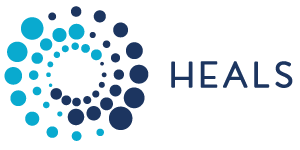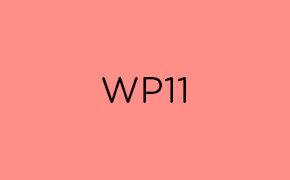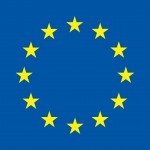Objectives:
- To develop a framework of modelling tools for estimating external exposure of selected population groups
- To develop a conceptual framework to assess uncertainties related to the external exposure model framework and uncertainties of the exposure calculation results
- To test the modelling framework by estimating first results for external exposure for the case studies in Stream 5, i.e. WP14 through WP16
- To support the estimation of environmental burden of disease in the European population belonging to different SES groups
Description of work and role of partners:
WP11 will use the data sets collected in WP8 and data and methods developed in WPs 9 and 10 as its main starting point. Depending on the available data geospatial analysis and multimedia modelling will be used to estimate concentrations of the analysed toxic substances in ‘microenvironments’ and food. Methods of how to handle missing data will be exploited. The exposure model developed in WP9 will then be used to estimate the external exposure of population subgroups as well at the countries involved in the Stream 5 population studies. Probabilistic methodologies will be used to integrate uncertainty associated with the measurement and modelling of the various agent-specific potential doses and to integrate across time and space.
This WP aims to develop a methodological and computational framework for retrospectively estimating the external exposures of differently vulnerable population groups to multiple stressors via different exposure routes and pathways. To this aim WP11 will use the data sets collected in WP8 as its main starting point and combine them with the various data and tools developed in WP9 and WP10 to translate “individual” exposure estimates derived from WP9 into coherent population groups exposure making use of probabilistic exposure modelling techniques.
The following specific tasks have been identified:
Task 11.1 Development of a methodological framework to estimate external exposure for population groups (USTUTT, AUTH, IOM, UOWM, TNO, VTT)
According to the requirements for assessing different chemical and physical stressors based on the selection of stressors relevant for the population studies in Stream 5, a probabilistic exposure modelling framework will be applied to derive external exposure distributions for population groups starting from the “individual “ exposure estimates derived in WP9 and fusing them with population-specific features (e.g. SES, time-activity patterns) to make them relevant to coherent population sub-/groups. Depending on the availability and quality of data, distributions for any exposure variable relevant to a given exposure assessment scenario can be used in a probabilistic exposure model. Distributions of exposure variables are combined in such a way as to derive a final exposure distribution. In this case, the initial data refer to a limited number of “individual exposures” derived from WP9 at the personal/individual level. Two probabilistic methods are currently in use: (a) Bayesian approach and (b) a maximum likelihood approach. We will explore both methods as both have advantages and disadvantages with respect to the necessary datasets used as input, how they handle uncertainty and how efficient they are in capturing probabilistic exposure profiles that are representative of target population groups. A set of modelling tools will be employed for assessing external exposure of population subgroups for the geographical scope of selected regions (i.e. where the cohorts of the Stream 5 population studies are referred), thereby taking into account the temporal and spatial substance group-specific characteristics regarding environmental fate and exposure behaviour as well as population subgroup-specific characteristics, such as time activity patterns, relevant microenvironments (i.e. home, work) and food consumption patterns taking into account trade of food. The modelling framework partly builds upon existing approaches and models available at USTUTT for assessing air pollutants and concentrations in different media through multimedia modelling. Additional approaches for modelling group exposure based on time activity information and activity specifc exposure data using probabilistic and Bayesian methods are available at TNO and IOM for assessing occupational exposures (both inhalation and dermal exposure) and can be generalised for environmental exposures. AUTH will provide models for indoor and aggregate exposure, as well as multi-media models for co-exposure to mixtures of chemicals in the environment that will be further developed and improved to finally estimate the external exposure to environmental stressors.
Data gaps will be covered through data fusion techniques (e.g. using Kalman filters) aiming at maximize the information available through an “intelligent” merging of the data available. To this aim satellite data collected in WP8 will be used to assess both directly pollution concentration levels in outdoor air and in water through the calculation of suitable optical indicators (e.g. AOD) or deriving directly concentration metrics and to estimate changes in land use/land cover likely to lead to change in emission patterns of chemical providing thus a comprehensive picture of atmospheric and water pollution over a wide area with moderate (300-500 m) up to very high spatial resolution (ideally up to 10 meters). The relevant data fusion algorithms have been developed in the frame of the EU-funded projects ICAROS NET and SMAQ
The final outcome of this task will be a methodological framework to quantify annual exposures via different exposure routes and pathways for the whole lifetime or for critical windows of life for pre-defined population sub-groups. The latter will be defined on the basis of a number of indicators such as age, sex, area of residence/work/study, socio-economic status, and behavioural patterns. The final result of a pathway is always the exposure to one or more health stressors for specific population subgroups or of the whole population in the different countries involved in the population studies carried out in Stream 5.
Task 11.2 Uncertainty assessment (AUTH, CSIC, USTUTT)
Uncertainties derive both from errors and uncertainties in the source data and measurements, in the models and assessment methods and in the methods used to link information throughout the chain. The main objective of this task is the development of methods for identifying sources of uncertainty in the exposure-related data, as well as estimating levels of uncertainty and their propagation through the probabilistic exposure assessment process. A general framework on how to report this uncertainty in ways that enable users better to understand the results will be developed. HEALS will explore sources of uncertainty in assessment processes and develop methods for quantifying, reporting and, where possible, controlling them. A probabilistic methodology based of hierarchical Bayesian techniques will be developed (a) to enable the modelling framework to also consider uncertainties of input data sets as well as uncertainty related to model algorithms, spatial and temporal resolutions, (b) to assess and quantify how uncertainty propagates across the different steps of the calculation and (c) to provide probability distributions of population subgroup-specific external exposure along with a description of related uncertainties. Secondly, results from testing the modelling framework regarding the estimation of external exposure to selected stressors derived in Task 11.3 will be evaluated against measured exposure data to improve the modelling framework.
Task 11.3 Application of the methodological framework to population studies (USTUTT, UPMC, AUTH, IOM, VTT, TNO, CSIC, UOWM, CERETOX)
The methodological framework developed in Task 11.1 will be applied to the population studies addressed in Stream 5 (WP14 to WP16), providing quantitative estimates of external exposure data for the population and population subgroups covered in this Stream. Collected and synthesised data regarding concentrations of chemicals in environmental media (air, water, soil) and food (residues in crops, concentrations in meat, dairy products, fish) from WP8, regarding human exposure via inhalation oral and dermal, together with time activity patterns for different population groups and data regarding population health and vulnerability data for different population groups from WP10 will be provided by partners involved in these WP’s and used as input data for the data and model fusion system developed in Task 11.1. In addition differentiated vulnerabilities will be analysed by SES-stratified modelling, building on the results of WP10.
The modelling framework will be further refined and applied in the EXHES pilot study in WP17 where detailed exposure estimates at “individual” level derived from the application of agent-based model developed in WP9 will be available. The scope of this application will be to draw conclusions on the association between environment, health and genetic/epigenetic susceptibility at the population level starting from the individual exposomic information developed in WP9.


